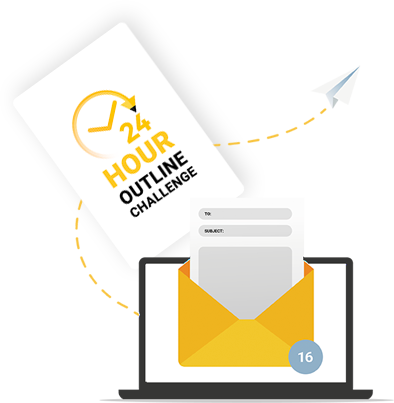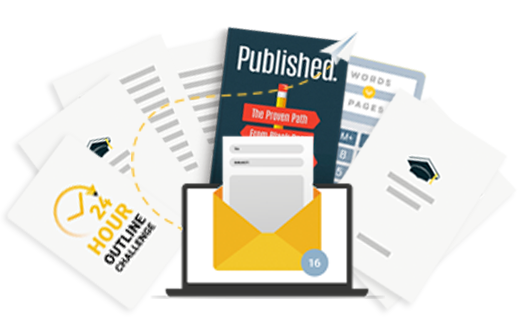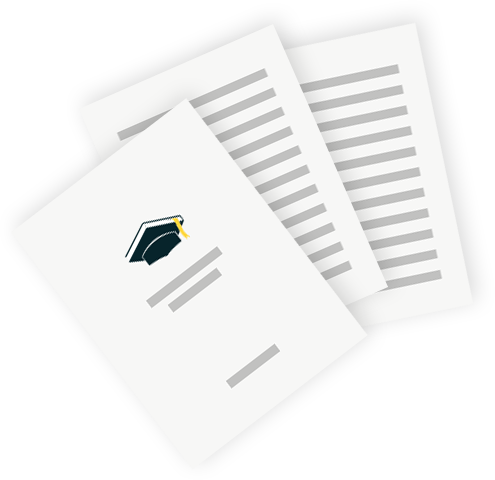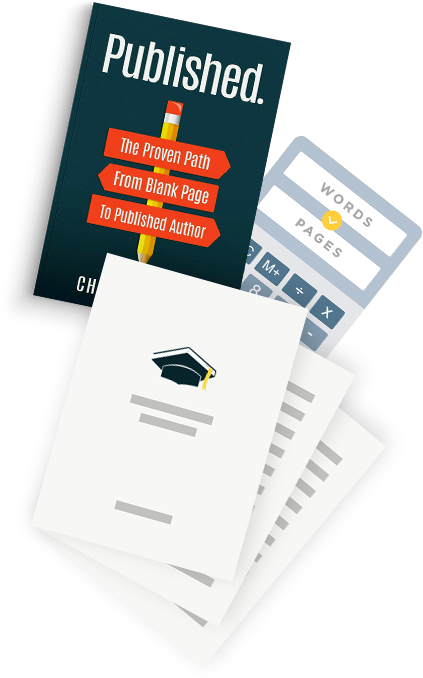Do you ever play with sound in your writing?
There are tons of literary devices and stylistic tricks to use in prose to spice it up. Many involve sound, like alliteration, assonance, and rhyme.
Although commonly used in poetry, these devices can be applied to any form of creative writing.
Today we’re talking about alliteration:
- What is alliteration?
- What is assonance?
- Examples of alliteration
- How to use alliteration in your writing
What is alliteration?
Alliteration is a literary device where you use a series of words that all have the same beginning consonant sound. The words can be directly next to each other, or just in close enough proximity to be noticeable. As a device used for sound, it is most often utilized in poetry.
NOTE: alliteration and assonance (which I’ll get into later) don’t necessarily have to use sounds at the very beginning of words. Just like “rhyme” usually refers specifically to end rhymes but can use internal rhymes, alliteration and assonance definitionally refers to the beginning of words but can occur in the middle of words as well.
Not every word in an alliterative phrase must be alliterated, but there needs to be at least two words in close enough proximity to create the dynamic sound for it to be considered alliteration.
There are a couple of things that aren’t “perfect” alliteration–let’s call them alliteration adjacent:
Alliteration of mismatched consonants–You might have alliteration through sound and not actual consonant. This is often the case.
For example, here’s a line from Edgar Alan Poe’s The Raven:
Closed my lids, and kept them close,
The consonants don’t match, but the sounds do, giving it the same audial effect of perfect alliteration.
Opposite the alliteration of mismatched consonants, you have something similar to a sight rhyme. A sight rhyme is where words look like they should rhyme, but their pronunciation does not rhyme.
Sight rhyme alliteration–Alliteration could be used as a sort of sight rhyme, where it isn’t actually alliterated in sound, but the words begin with the same letter.
Here’s an example from one of my own poems, Reredos:
Your skin drapes
like an altar cloth
across words swallowed
before they’re whispered.
Each iteration of the letter “a” has a different pronunciation, but it has the same effect of a sight rhyme, where it looks similar. This is technically not alliteration, but it is another tool you can use to craft unique prose.
Also, since it uses vowels instead of consonants, the above example is technically assonance.
What is assonance?
Similar to alliteration, assonance is the repetition of a sound, but it is the repetition of a vowel sound instead of a consonant. Using assonance will give a phrase more of a sing-songy, uplifting tune, while alliteration is more staccato and can be used for harder emphasis.
TIP: You can use assonance and alliteration intentionally by matching them to the tone of the piece. Are you telling a very harsh story? Alliteration might give you the extra hard beat for emphasis. Assonance might suit a story from the perspective of an innocent person, to romanticize an event, or in a soft description.
Dylan Thomas’ Do Not Go Gentle into the Good Night uses assonance and alliteration in tandem:
Grave men, near death, who see with blinding sight
Blind eyes could blaze like meteors and be gay,
Rage, rage against the dying of the light.
Assonance:
- blinding sight/Blind eyes…like…light
- See…meteors and be
- Grave…blaze…gay…Rage, rage
Sight rhyme: near death
Alliteration: blinding…Blind…blaze
Examples of Alliteration
The first thing that comes to my mind when I think of alliteration is the tongue-twister I had to learn when I was a kid taking speech lessons: “She sells seashells by the sea-shore.” The alliteration in that example is the repetition of the “S” and “SH” sounds.
But alliteration usually isn’t used in creative writing for things as campy as tongue-twisters. It’s used to enhance language, rhythm, and sound in prose and poetry. Alliteration can also be used to emphasize words, phrases, and ideas.
Alliteration is most often seen in cliches, titles, and poetry.
—Alliteration in cliches
Cliches are often sing-songy, fun, silly phrases, so you’ll see alliteration and assonance pop up in common sayings, like:
- Dead as a doornail
- Busy as a bee
- Right as rain
- Method to my madness
Alliteration in cliches makes them more fun and catchier, which is what a cliche is meant to be.
—Alliteration in titles
Using alliteration in titles makes them stand out, makes them more memorable (peep that alliteration), and makes them sound a bit cooler, like:
- Black Beauty
- Peter Pan
- Gone Girl
- Doctor Dolittle
- Mirrors, Messages, Manifestations
- Wombat Walkabout
Titles are a book’s greatest marketing tool, and alliteration is one more way to make a title stand out.
—Alliteration in poetry
Alliteration in poetry lends itself to rhythm and musicality. It’s a unique tool to use for sound, so you’ll see it often in poems.
Here’s another example from Edgar Allan Poe’s The Raven. You’ll find assonance and alliteration in many of Poe’s works, even his short stories:
Once upon a midnight dreary, while I pondered, weak and weary/over many a quaint and curious volume of forgotten lore–
Quaint and curious is another example of using alliteration with mismatched consonants.
This is an example from Abigail Giroir’s Summer Offering:
Body bent, devoured,
watermelon rind grass and pregnant trees,
picked clean.
As you can see in Giroir’s excerpt, alliteration can be two directly connected words, or as far apart as an entirely different line. As long as the words are close enough together that they’re still “ringing” in your reader’s head, it’s alliteration.
BUT, like in this line from Krystal Dean’s My Roman Stomach-Heart, the more words used and the closer they are to each other, the more noticeable the effect of alliteration:
My toga twists as I turn her.
How to use Alliteration in your writing
Alliteration is great to use in shorter pieces of writing, like poetry or flash fiction, where sound and language have an emphatic importance. In something longer, like a full novel, it might seem accidental or out-of-place.
Here are a few things to keep in mind if you want to write with alliteration.
#1 – Don’t overdo it!
If you read it back and it sound sing-songy or campy (and that isn’t your intent), you probably need to scale it back. Just like with anything, you can have too much of it. If you tip over more than four alliterated words in a row, it might be a little much. BUT it could be fun to have the same consonant repeated in alliterated phrases, spread throughout a piece.
While pelts pattering might sound graceful in a poem,
Peter Piper picked a peck of pickled peppers/a peck of pickled peppers, Peter Piper picked/if Peter Piper picked a peck of pickled peppers, where’s the peck of pickled peppers Peter Piper picked?
Sounds considerably less graceful, doesn’t it?
#2 – Consider tone.
Like I said earlier, assonance and alliteration give two different vibes. Different consonant sounds can convey different emotions.
For example, the sound of the letter “B” takes considerable effort relative to other consonants. It gives you a feeling of dragging, of heaviness. Take a look at this line from Paradise Lost by John Milton:
Behemoth, biggest born of earth, upheaved.
You can see how alliteration used there drags, like the feet of a giant. It’s an appropriate sound for the subject matter.
Opposite, the “S” and “SH” sounds are smooth, like a slithering snake. In this example from Birches by Robert Frost, those sound repetitions are used to describe nature:
Soon the sun’s warmth makes them shed crystal shells.
Do you see how those sounds flow into each other? It’s reminiscent of nature, like sunshine pouring and rivers flowing.
The sounds you choose to use can reflect the tone of the subject matter.
#3 – Try finishing your piece before you add alliteration
Like a rhyme scheme, devoting a piece of writing to alliteration before you write it will narrow your word choice and restrict creativity.
Try fully drafting your piece, then editing in some alliteration where it might fit in more naturally.
It’s usually easier to edit writing to be what you’d like it to be than it is to write it that way in the first go.
#4 – Experiment!
If you’ve never used alliteration before, try it out however you’d like to. Toss out all the rules I’ve laid out so far and go wild with different styles.
You can learn to use alliteration more intentionally later, but experimentation is one of the best parts of writing.
Here are a few prompts to get you going:
- Write your own tongue-twister
- Take a poem you’ve already finished and add a few phrases of alliteration
- Take words from this prompter and use them to write a poem
- Write an alliterative poem using the first letter of your name
Use one of these prompts and leave the results in a comment!
Alliteration is a fun stylistic tool to practice, tweak, and keep in your writer’s toolbox.




